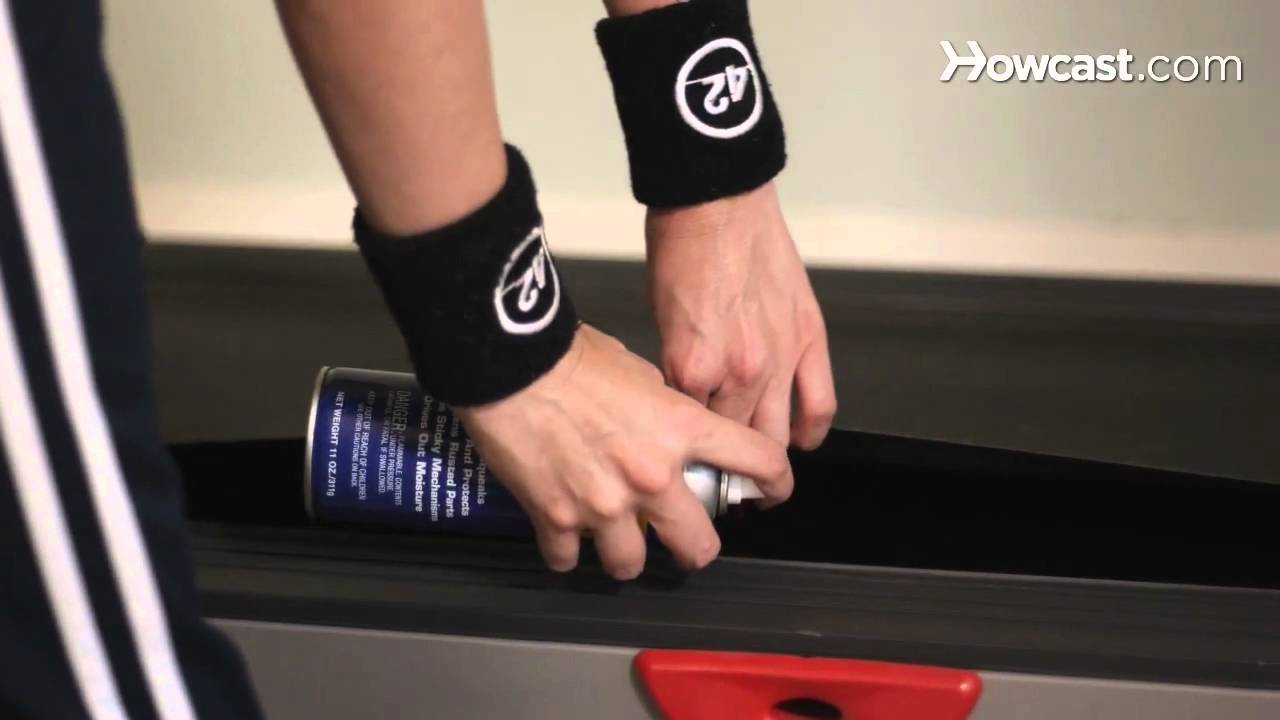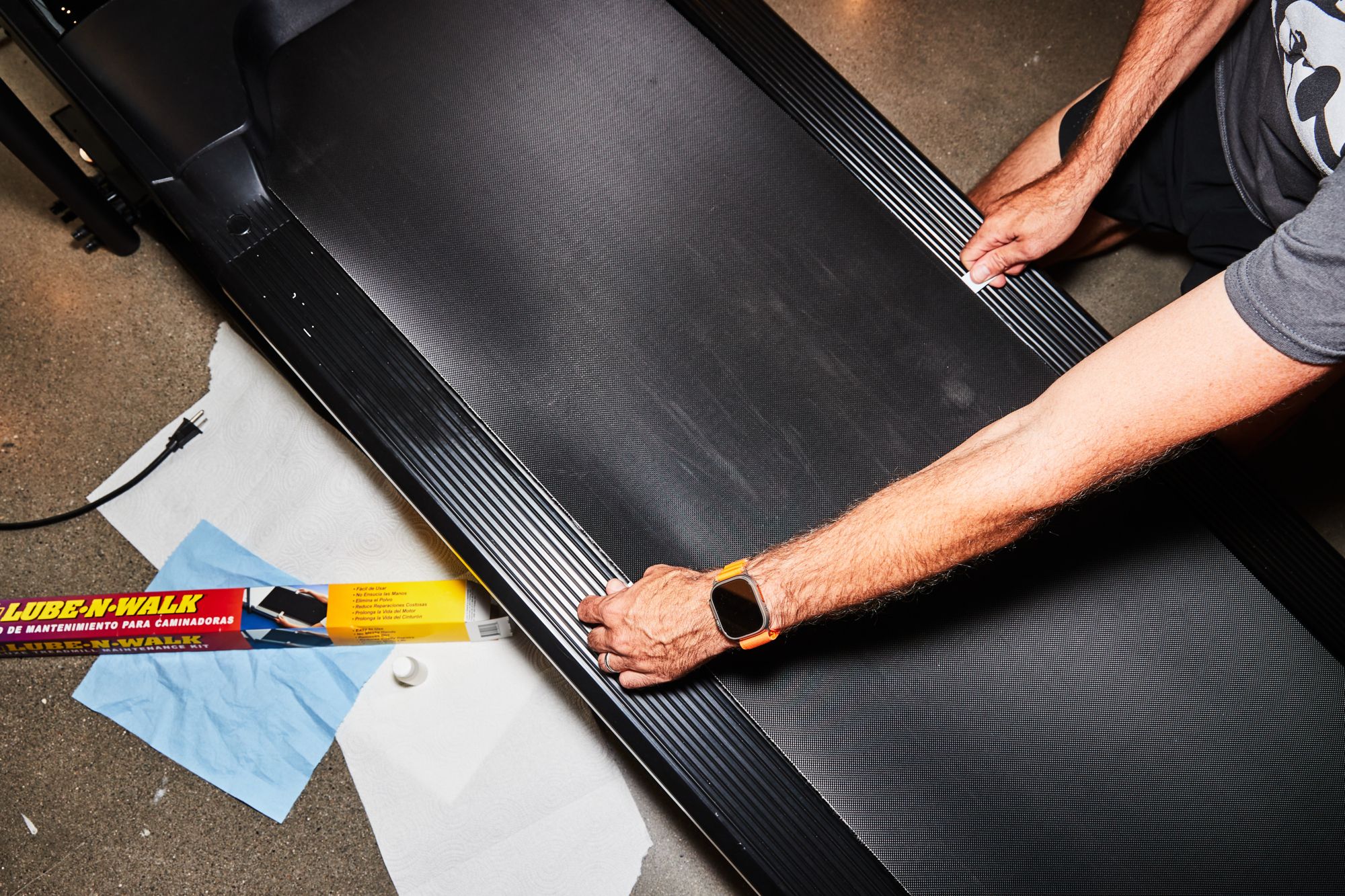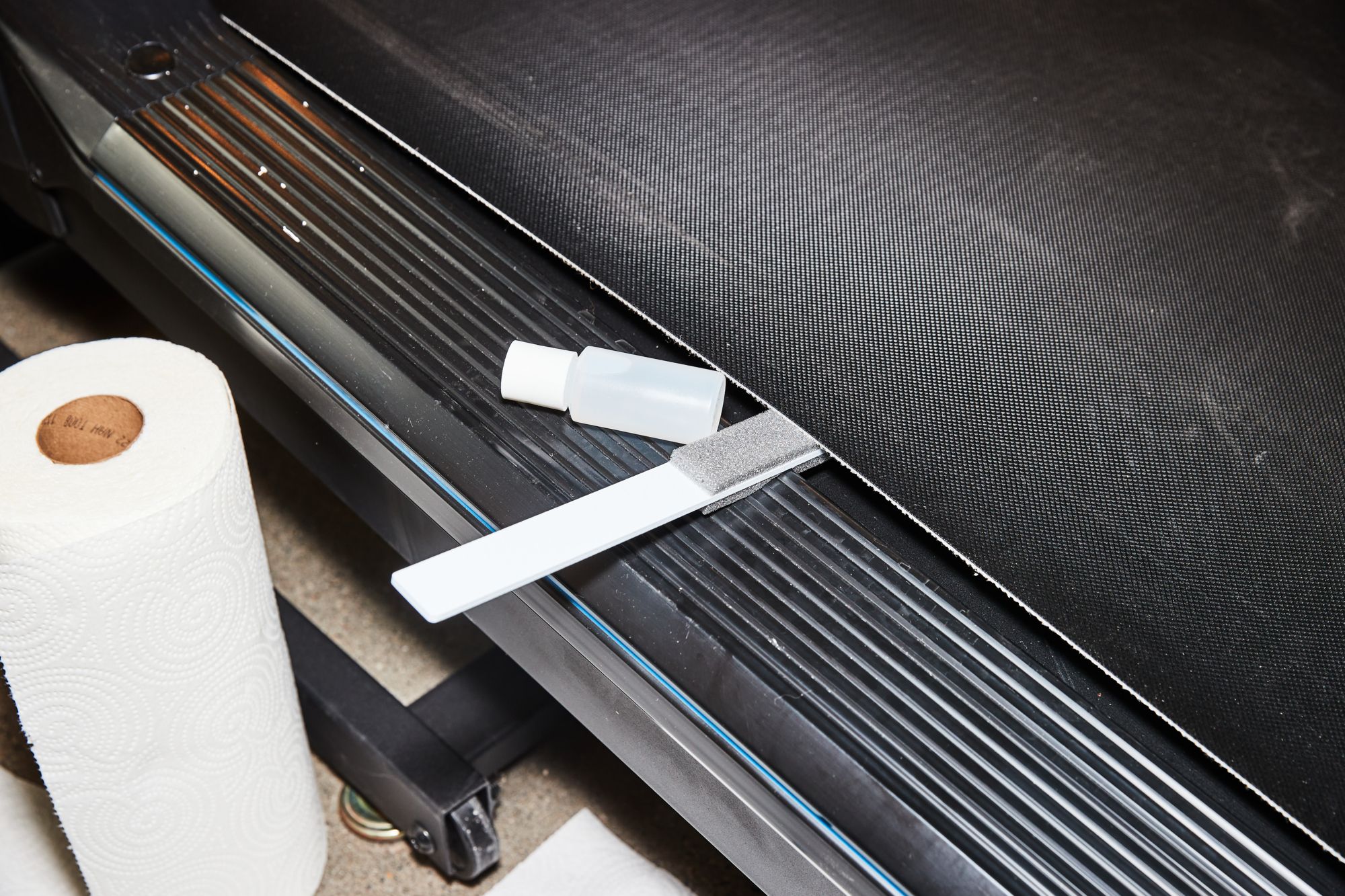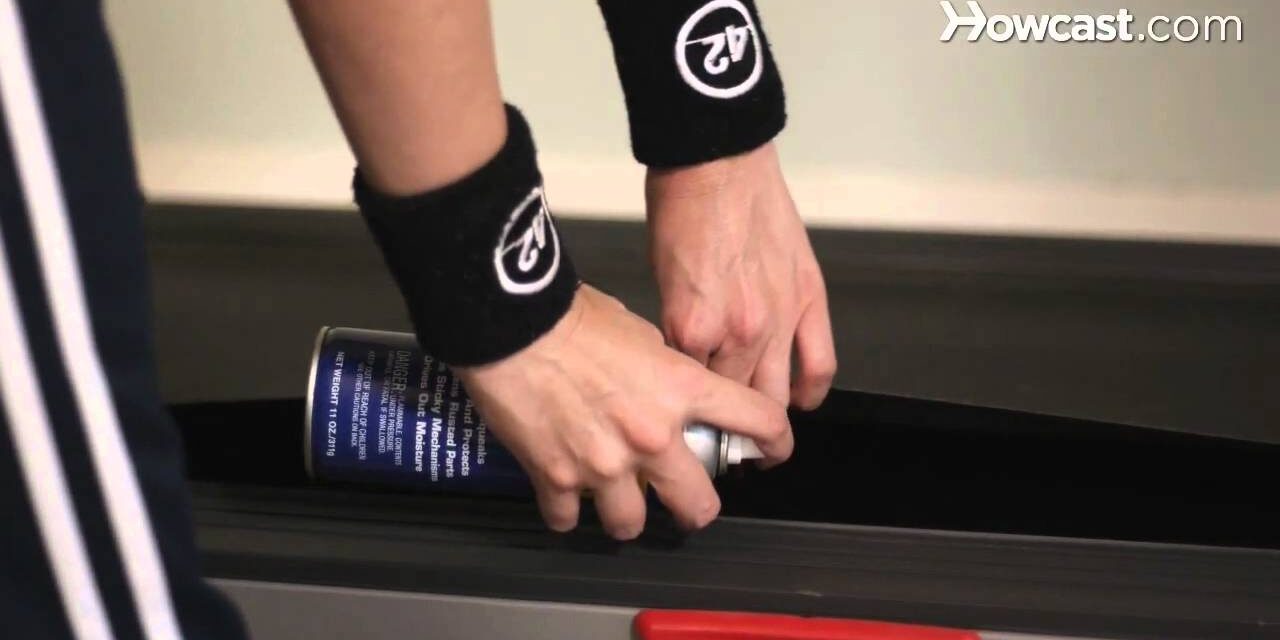Looking to keep your treadmill running smoothly? One crucial step in treadmill maintenance is properly lubricating the belt. In this article, we will guide you through the process of lubricating your treadmill belt, ensuring optimal performance and extending the lifespan of your treadmill. Whether you’re a seasoned fitness enthusiast or just starting your fitness journey, this step-by-step guide will make it easy for you to keep your treadmill belt in top shape. So, let’s get started and learn how to lube your treadmill belt like a pro!

This image is property of hips.hearstapps.com.
Why is it important to lube your treadmill belt?
Reduce friction
Lubricating your treadmill belt is important because it helps reduce friction between the belt and the deck. When the belt and deck rub against each other without proper lubrication, it can create heat and cause unnecessary wear and tear on the machine. By reducing friction, you can ensure that your treadmill operates smoothly and efficiently, providing you with a better workout experience.
Prevent wear and tear
Regularly lubricating your treadmill belt can also help prevent wear and tear. When the belt and deck are properly lubricated, there is less strain on the motor and other moving parts of the machine. This can help prevent premature damage and extend the overall lifespan of your treadmill.
Extend the lifespan of your treadmill
By reducing friction and preventing wear and tear, regularly lubing your treadmill belt can ultimately extend the lifespan of your machine. A well-maintained treadmill is more likely to function properly for a longer period of time, saving you money on repairs or having to invest in a new treadmill sooner than expected.
Choosing the right lubricant
Silicone-based lubricant
When it comes to choosing a lubricant for your treadmill belt, it is important to use a silicone-based lubricant. Silicone-based lubricants are specifically designed for fitness equipment and provide the necessary lubrication without causing damage to the belt or deck. They are also resistant to heat and humidity, making them ideal for use in a treadmill.
Avoid using petroleum-based products
It is important to avoid using petroleum-based products, such as WD-40, on your treadmill belt. These products are not designed for use on fitness equipment and can cause damage to the belt and deck over time. They can also create a sticky residue that attracts dirt and debris, which can further hinder the performance of your treadmill.
Check manufacturer’s recommendations
To ensure you are using the right lubricant, always refer to the manufacturer’s recommendations. Different treadmill brands may have specific lubricant requirements, so it is important to follow their guidelines to avoid any potential issues or damage to your machine.
Preparing your treadmill
Turn off and unplug the treadmill
Before applying lubricant to your treadmill belt, it is crucial to turn off the machine and unplug it from the power source. This safety precaution ensures that you won’t accidentally start the treadmill while working on it, reducing the risk of injury.
Clean the belt and deck
To ensure optimal lubrication, it is essential to clean the belt and deck of your treadmill before applying any lubricant. Use a clean, dry cloth or a mild detergent and water solution to remove any dirt, sweat, or debris that may have accumulated on the surface. This will help prevent any particles from interfering with the lubrication process and potentially damaging the belt.
Adjust the belt tension
Before applying lubricant, check the tension of the treadmill belt. An improperly tensioned belt could affect the distribution of lubricant and lead to uneven wear. Refer to your treadmill’s manual or the manufacturer’s instructions to properly adjust the belt tension for optimal performance.
Inspect for any damage
While preparing your treadmill, take a moment to inspect the belt and deck for any signs of damage or excessive wear. Look for frayed edges, cracks, or areas that appear thin or worn out. If you notice any issues, it is advisable to address them before applying lubricant. This can prevent further damage and ensure a safer and more efficient workout.
Applying the lubricant
Position the treadmill properly
Place your treadmill in an accessible location where you can easily access both sides of the belt. Make sure there is enough space around the treadmill to work comfortably and safely. Positioning the treadmill properly will allow for a smoother application of the lubricant.
Apply lubricant along both sides of the belt
Using the recommended silicone-based lubricant, apply a thin, even layer along both sides of the treadmill belt. Start near the front of the machine and work your way towards the back, ensuring that the lubricant is evenly spread along the entire length of the belt.
Use a thin, even layer
It is important not to over-lubricate your treadmill belt. Using too much lubricant can cause an imbalance in the distribution and potentially make the belt slippery. A thin, even layer is sufficient to provide the necessary lubrication for a smooth operation.
Avoid over-lubricating
Be mindful not to over-lubricate the treadmill belt. Applying excess lubricant may lead to accumulation and dripping, which can create a mess and make it unsafe to use the treadmill. Over-lubrication can also attract more dirt and debris, which can further cause damage to the belt and deck over time.

This image is property of i.ytimg.com.
Distributing the lubricant
Walk or run on the treadmill for a few minutes
To evenly distribute the lubricant, it is recommended to walk or run on the treadmill for a few minutes at a low speed. This will help the lubricant spread evenly across the belt and ensure that it reaches all the necessary areas.
Spread the lubricant evenly
During the short walk or run on the treadmill, keep an eye on the distribution of the lubricant. If you notice any uneven spots, you can use a clean cloth or your hand to spread the lubricant more evenly across the belt. This will help ensure consistent lubrication and prevent any areas from drying out.
Re-tensioning the belt
Adjust the tension to manufacturer’s recommendations
After distributing the lubricant, it is important to re-check and adjust the tension of the treadmill belt according to the manufacturer’s recommendations. Proper tension ensures that the belt remains centered and does not slip or move excessively during use. Follow the instructions in the treadmill’s manual to ensure the correct tension is maintained.
Ensure proper alignment
While adjusting the tension, also ensure that the treadmill belt is properly aligned. A misaligned belt can cause uneven wear and increase the strain on the motor and other components. Use the proper tools or consult your treadmill’s manual for instructions on aligning the belt correctly.

This image is property of hips.hearstapps.com.
Cleaning up
Wipe off any excess lubricant
Once you have completed the lubrication process, take a clean cloth and wipe off any excess lubricant from the treadmill belt and deck. This will help prevent the accumulation of dirt and debris, ensuring a cleaner and more efficient workout experience.
Clean the treadmill
After wiping off the excess lubricant, take a moment to clean the rest of the treadmill. Use a mild detergent and water solution to clean the frame, console, and other surfaces. Pay special attention to any areas that may have come in contact with the lubricant and remove any residue.
Dispose of any cleaning materials properly
Dispose of any used cleaning materials, such as cloths or paper towels, properly. Consider recycling or following local waste disposal guidelines to ensure that you are environmentally conscious in your cleanup process.
Maintaining a regular lubrication schedule
Follow manufacturer’s guidelines
To ensure the optimal performance and longevity of your treadmill, it is important to follow the manufacturer’s recommended lubrication schedule. Different treadmills may have varying requirements, so refer to the user manual or contact the manufacturer for specific guidelines.
Consider frequency of use
The frequency of lubrication may depend on the frequency of use of your treadmill. If you use your treadmill daily or for extended periods, you may need to lubricate it more frequently. Listen to your treadmill and monitor any changes in noise or performance that may indicate the need for lubrication.
Monitor the condition of the belt and lubricant
Regularly inspect the condition of your treadmill belt and the performance of the lubricant. Look for signs of wear, such as fraying or cracking, and check if the lubricant is still providing smooth and quiet operation. Taking note of any changes will help you maintain and address any potential issues before they become more significant problems.

This image is property of i.ytimg.com.
Common mistakes to avoid
Using incorrect lubricant
One common mistake to avoid is using the incorrect lubricant on your treadmill belt. Always use a silicone-based lubricant specifically designed for fitness equipment to avoid damaging the belt and deck.
Over-lubricating
Over-lubricating your treadmill belt can lead to excessive accumulation and dripping, which can create a mess and potentially make the belt slippery. Stick to applying a thin, even layer of lubricant for optimal performance.
Not cleaning the belt and deck
Neglecting to clean the belt and deck before applying lubricant can cause dirt, sweat, and debris to interfere with the lubrication process and potentially damage the belt. Always take the time to properly clean the surfaces before lubricating.
Neglecting belt tension
Ignoring the proper tension of your treadmill belt can lead to uneven wear and affect the overall performance of the machine. Regularly check and adjust the tension according to the manufacturer’s recommendations to ensure optimal operation.
Conclusion
Regularly lubricating your treadmill belt is essential for proper maintenance and ensuring a smooth and long-lasting workout experience. By reducing friction and preventing wear and tear, lubrication helps extend the lifespan of your treadmill. Follow the steps outlined in this article, choose the right lubricant, and maintain a regular lubrication schedule to keep your treadmill in top condition. With proper care, you can enjoy years of uninterrupted workouts and make the most of your fitness investment. So don’t neglect the important task of lubing your treadmill belt and keep rocking your fitness goals with ease!

This image is property of hips.hearstapps.com.





